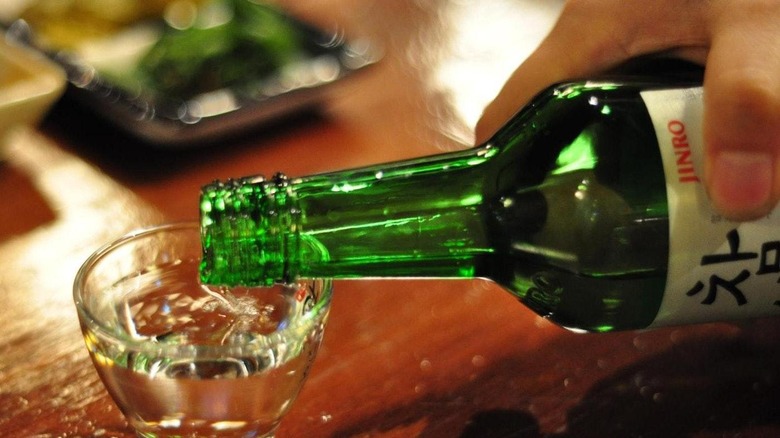What Is Soju?
As Americans discover Korean food beyond bibimbap and Kogi tacos, soju, a Korean liquor, is also getting the spotlight it deserves.
But what is it, exactly? Like Japanese sake, soju is traditionally fermented from rice. Since WWII, however, when there was a ban on distilling rice, it's also been made with wheat, sweet potatoes and tapioca; this tradition continues today, especially among lower-priced brands.
Soju packs quite a punch and is usually thought of as a weaker vodka. For context, soju offers an average alcohol by volume (ABV) of 20 percent, while vodka rings in at around 40 percent. (In California and New York, restaurants can actually get away with selling soju under a wine and liquor license, due to its comparatively lower alcohol content.) It's also a little sweeter and slightly more viscous than vodka.
Don't underestimate it though: Soju is often taken as a shot, or if you're feeling adventurous, dropped into a beer as a soju bomb. Chef Deuki Hong of New York's Kang Ho Dong Baekjeong is a fan of this method, having indulged in plentiful soju bombs on his book tour for Koreatown: A Cookbook. "It's a seven-to-three ratio—three soju, seven beer," he says in an interview with Liquor.com.
You can sip soju as well. It is traditionally enjoyed neat and cold, although that's started to change as Korean fusion cooking has extended into the drinks world. At Hanjip in L.A., chef Chris Oh (a past winner of Food Network's Great Food Truck Race) serves a cocktail with lime soju and coconut milk, as well as cheesy corn in a shinbone with marrow. After scraping out the mixture that the menu rather poetically refers to as "bone marrow corn cheese," customers can chug soju through the cleaned-out bone. ("Tell me how that goes," Jonathan Gold once wrote in a Los Angeles Times review.) It's a clever concept; the alcohol dissolves any remaining animal fat, ensuring that marrow fans don't leave any behind.
However you drink soju, here's to long life, good health—and more banchan, please.
